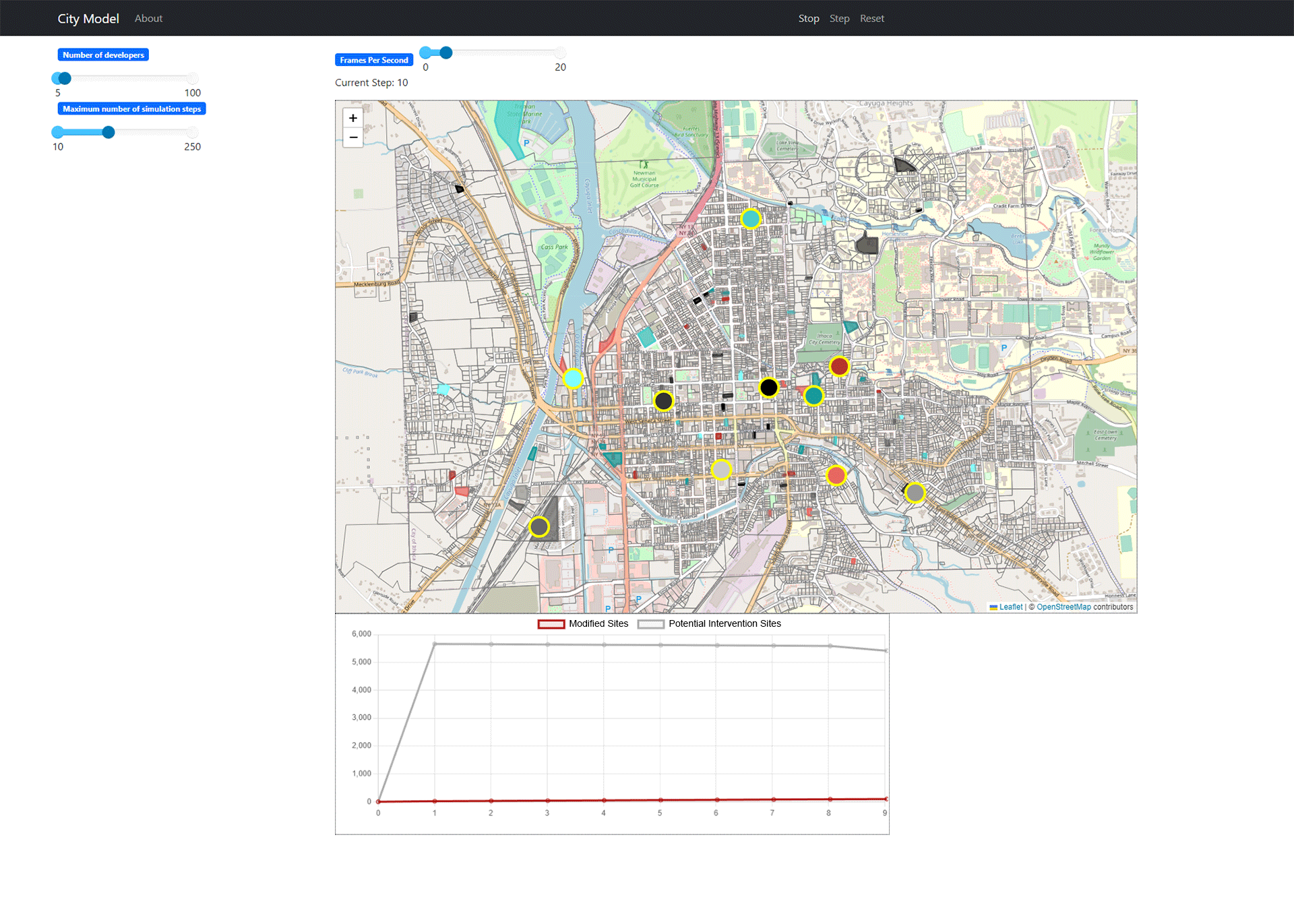Agent-Based Modeling and 3D Visualization for Building Preservation, Deconstruction, and Reuse in Ithaca
Just Places Lab and Realtime Urbanism Lab

Preliminary agent-based model depicting the reuse spectrum in Ithaca-area development, to be enhanced with local developer insights.
The National Center For Preservation Technology and Training (NCPTT) awarded grant funding for a preservation-focused reuse and deconstruction project to the Just Places Lab and Realtime Urbanism lab. Working together, Professor Jennifer Minner’s Just Places Lab and Professor Farzin Lotfi-Jam’s Realtime Urbanism lab are applying innovative modeling techniques to the challenges of climate change mitigation and decarbonization in Ithaca. The research project’s aim: assist Ithaca-area stakeholders in understanding building preservation, deconstruction, and reuse through exploratory scenario planning incorporating 3D and agent-based modeling. NCPTT is a research and education center within the US. Department of the Interior, National Parks Service, that is dedicated to advancing the field of historic preservation through the use of science and technology.
Supporting historic preservationists is a key goal of the project. Increasingly, preservationists have called for local governments to incorporate preservation and building reuse into their climate adaptation strategies. These calls require new tools and techniques to help preservationists engage with local leaders and stakeholders. The focus of the project is on a particaptory action approach: research that does more than just engage with different stakeholders in Ithaca, it brings them into the process as co-creators. The research will unfold in collaboration with local stakeholders, such as developers, city officials, and members of the Circularity Reuse and Zero Waste Development (CR0WD) network: Historic Ithaca, the Preservation Association of Central New York, the Susan Christopherson Center for Community Planning, the Circular Construction Lab, Finger Lakes ReUse, and the City of Ithaca, among others. Several Cornell students with Regional Science and Architecture are an integral part of the research team. This includes Courtney Bower (PhD student in Regional Science), DongHak Lee (Master in Regional Science), and Landon Hale (Rawlings Cornell Presidential Research Scholar and Undergraduate in Architecture).
The project emphasizes a mixed methods approach that incorporates qualitative research (e.g., conducting research interviews and engaging in participatory research) and quantitative (e.g., analyzing opinion dynamics of agents in network system and agent-based models) and spatial (e.g., tracing urban fabric transformations) and visualization. Scenario planning methods have informed the design of the research project and the community engagement planned for this project.The final deliverable of the project will include an agent-based model that incorporates community-level data combined with local spatial data. The results will be generalized and communicated to preservationists and a range of actors (property owners, developers, preservation architects) and local city and county officials. The results will be shared via conference and journal article submissions, along with planned outreach. It is planned that interested parties will be able to understand, design, and deploy scenario planning with 3D modeling and agent-based models in their communities.
Team
Just Places Lab: Jennifer Minner (Co-PI), Courtney Bower, DongHak Lee
Realtime Urbanism Lab: Farzin Lotfi-Jam (Co-PI), Landon Hale


